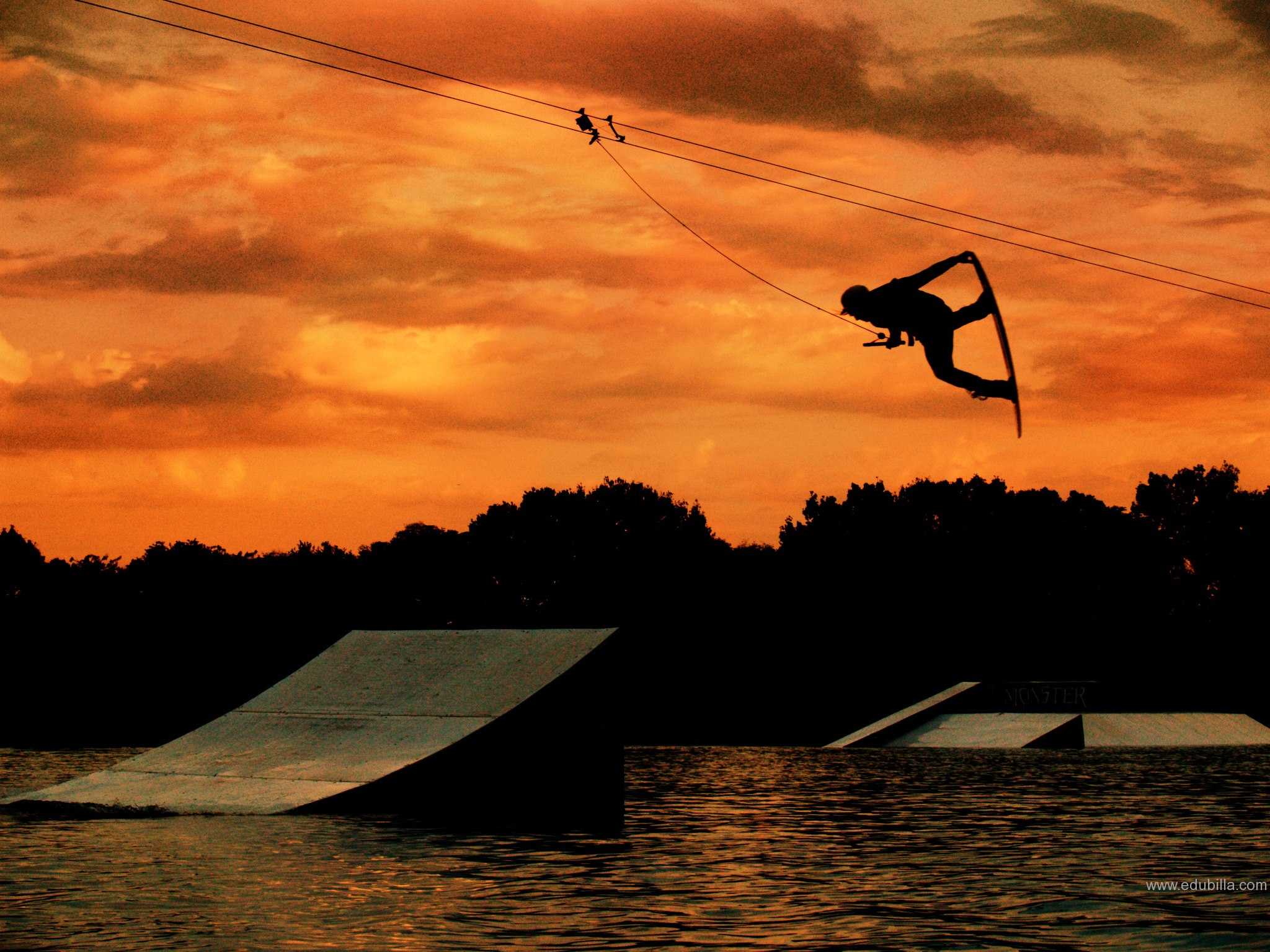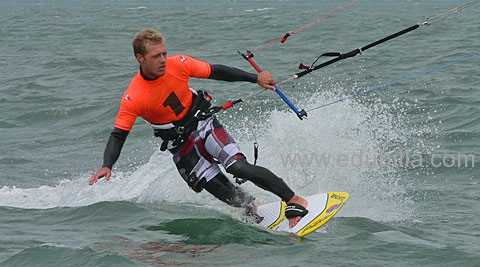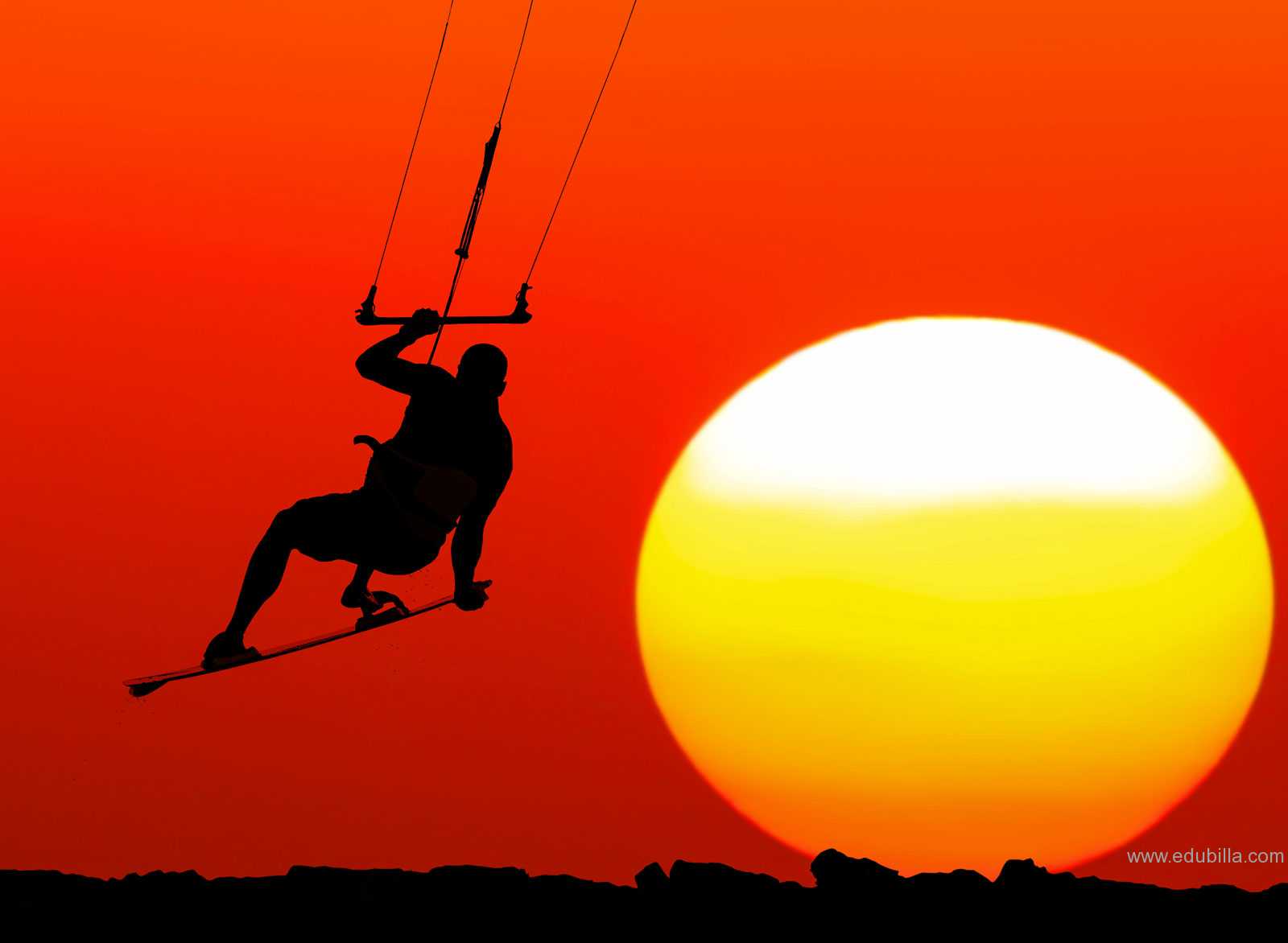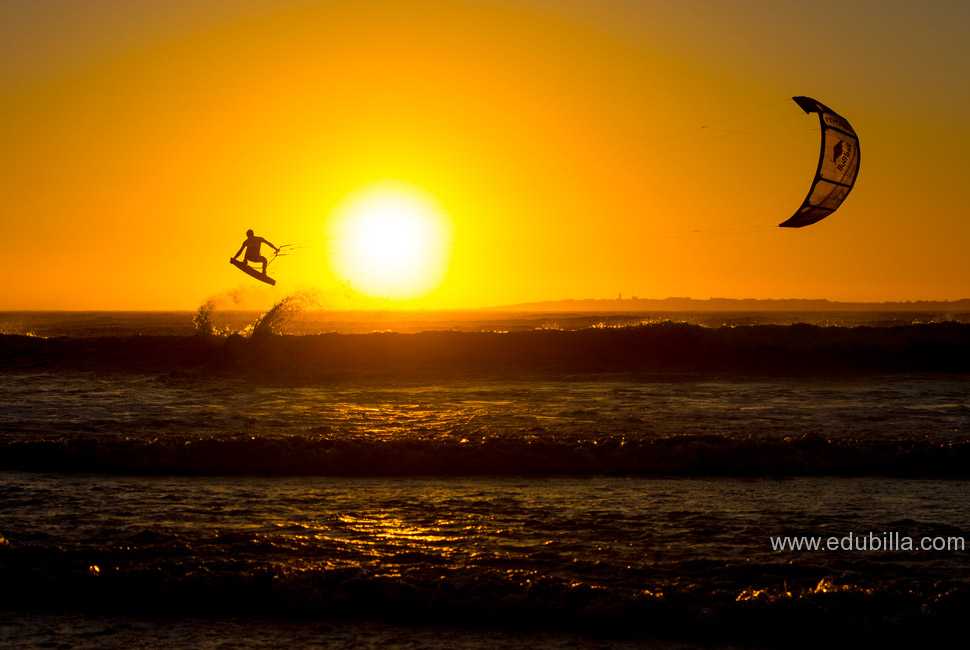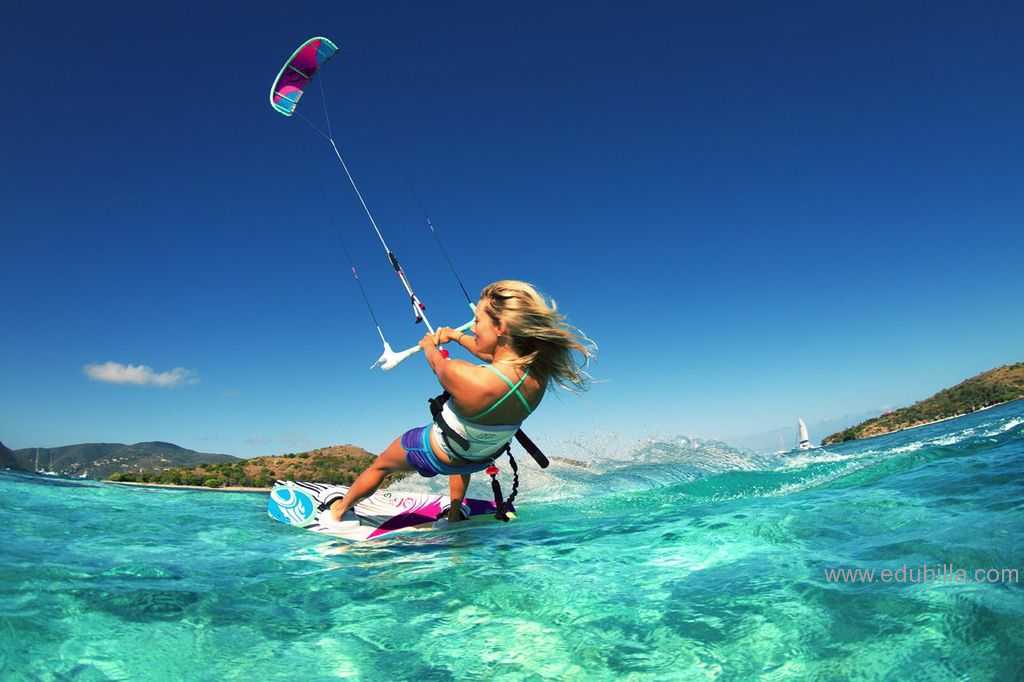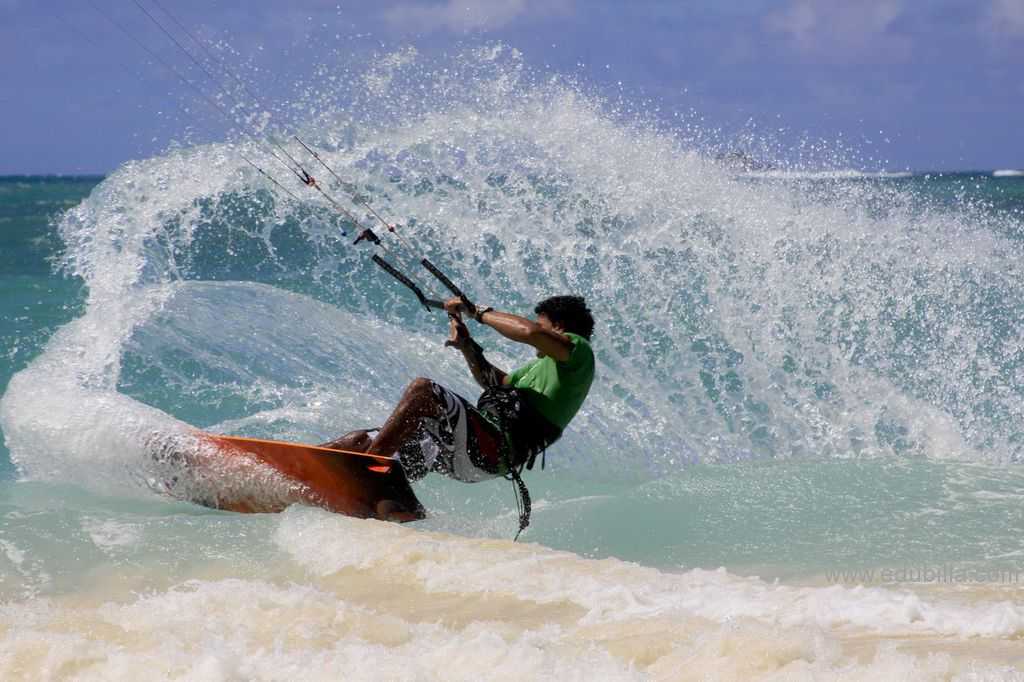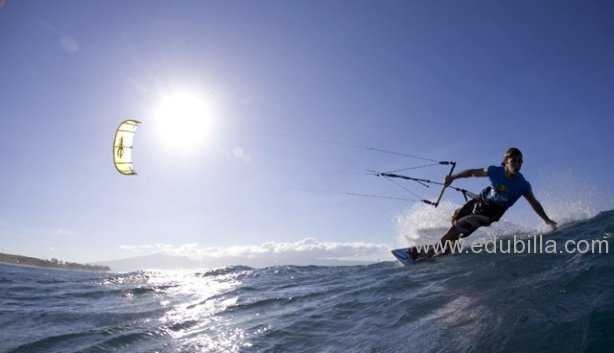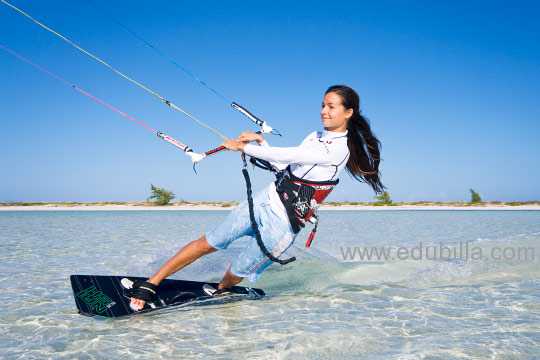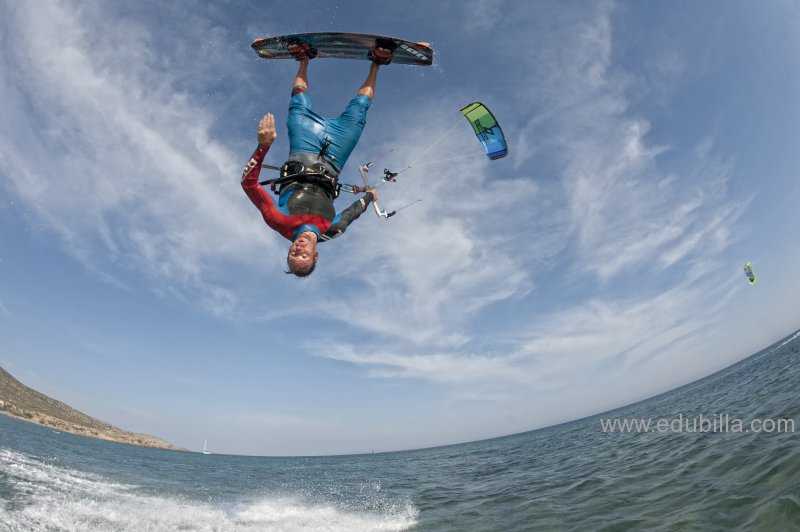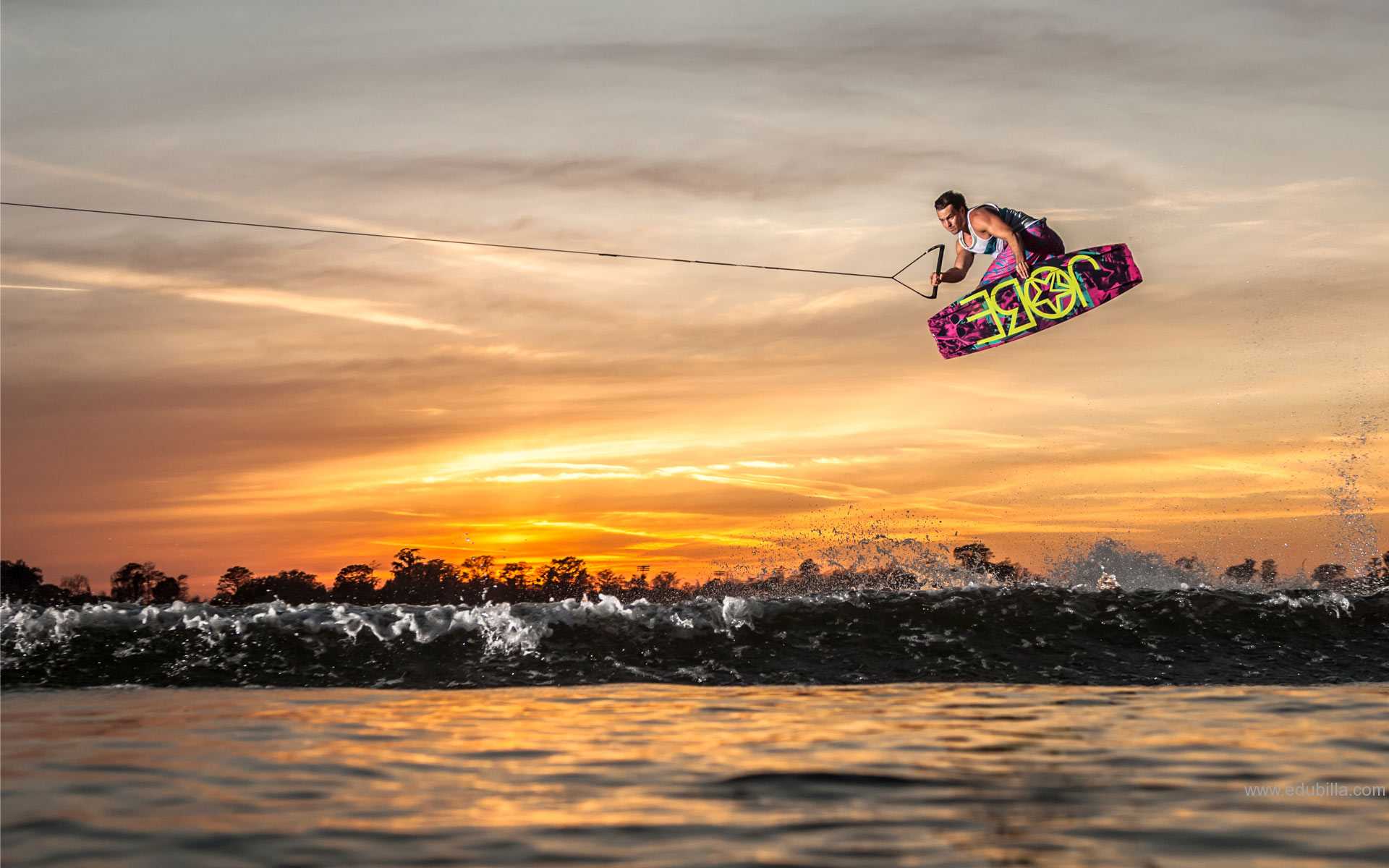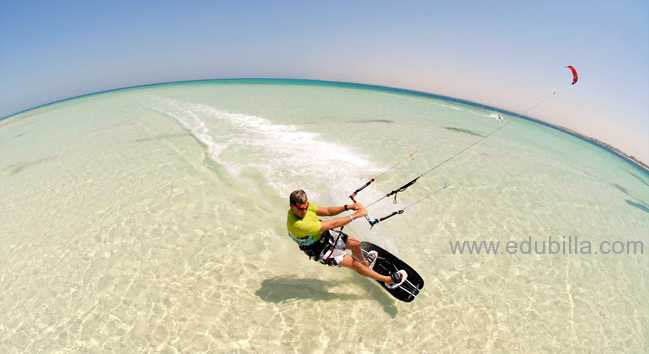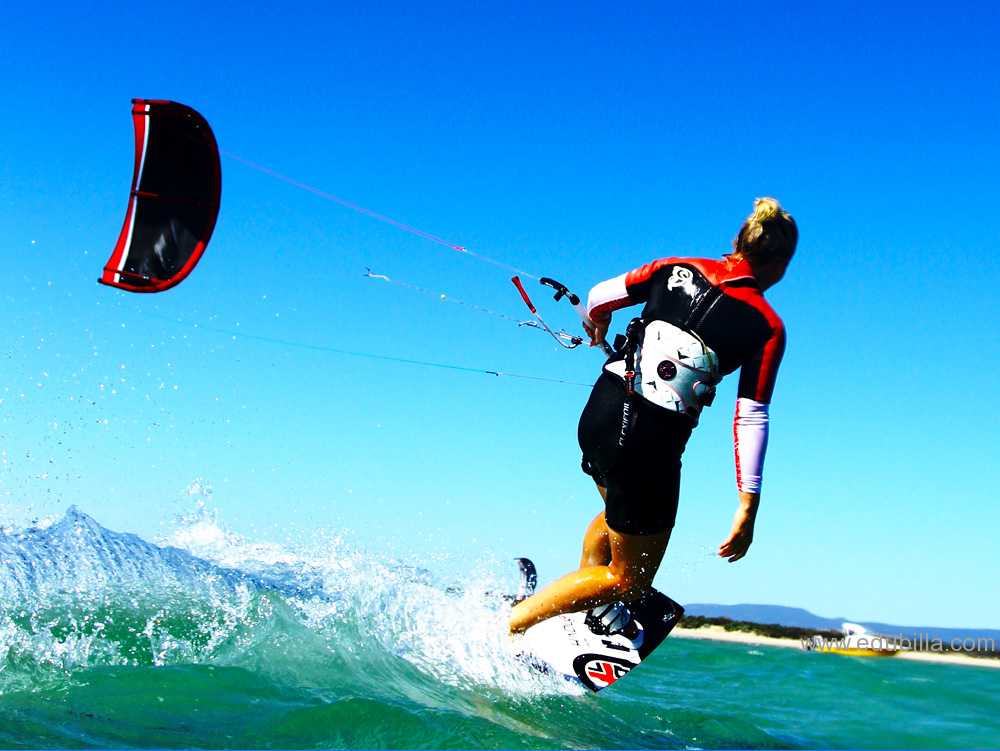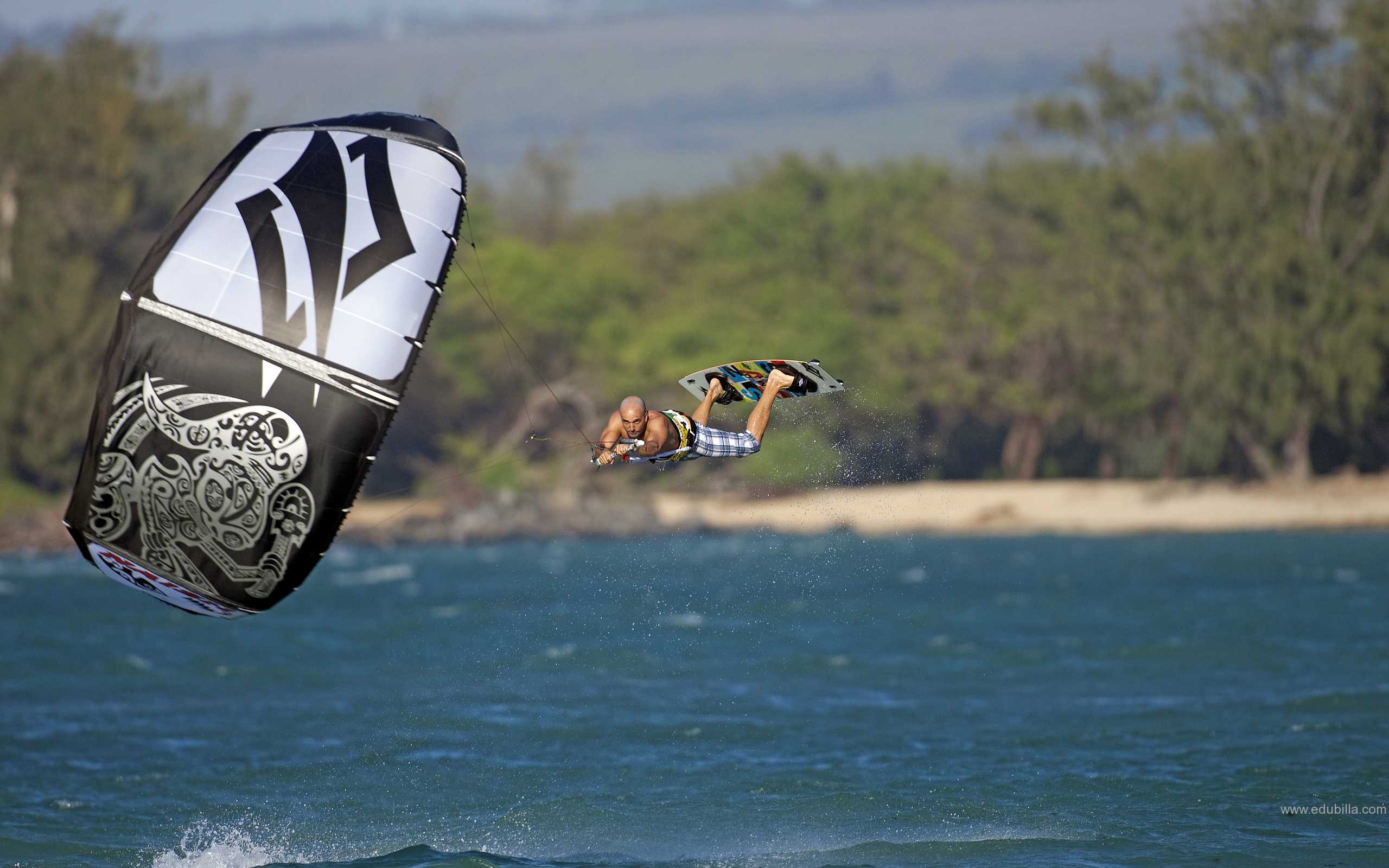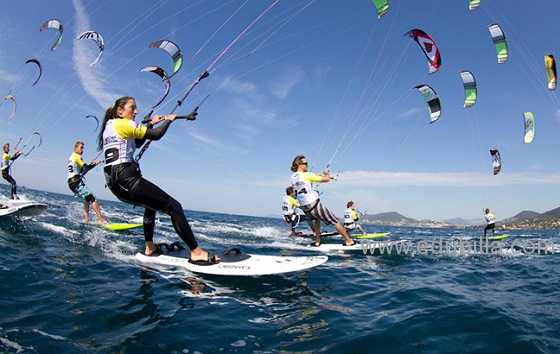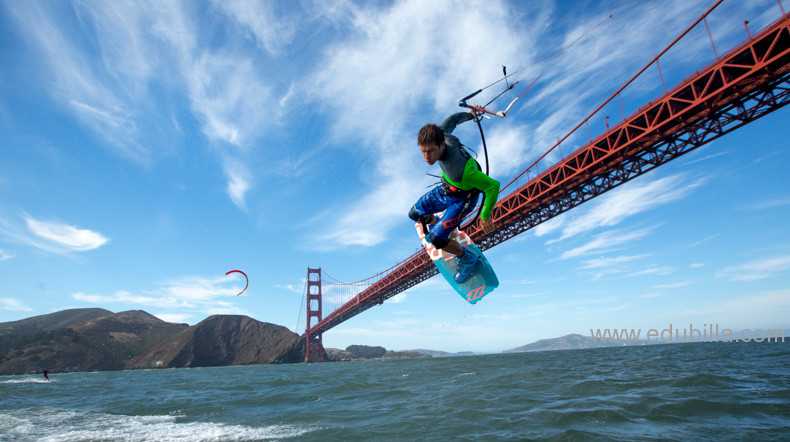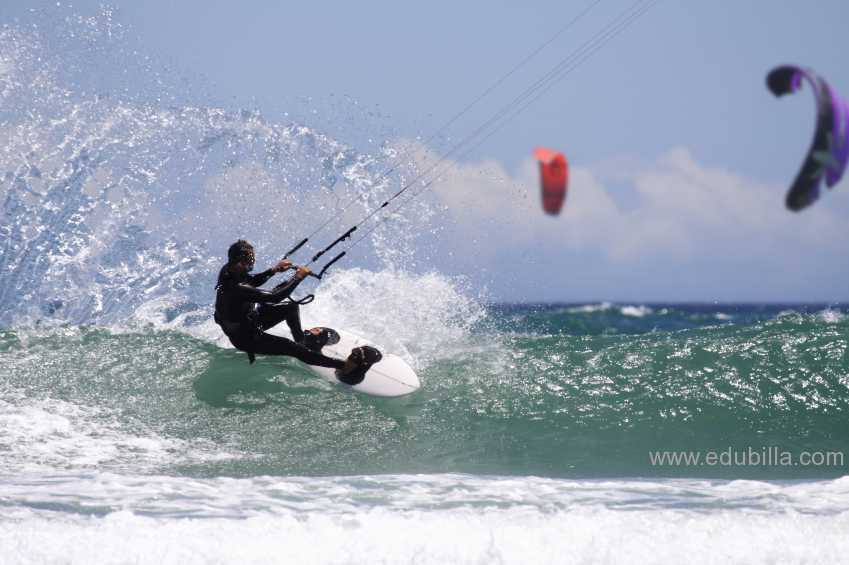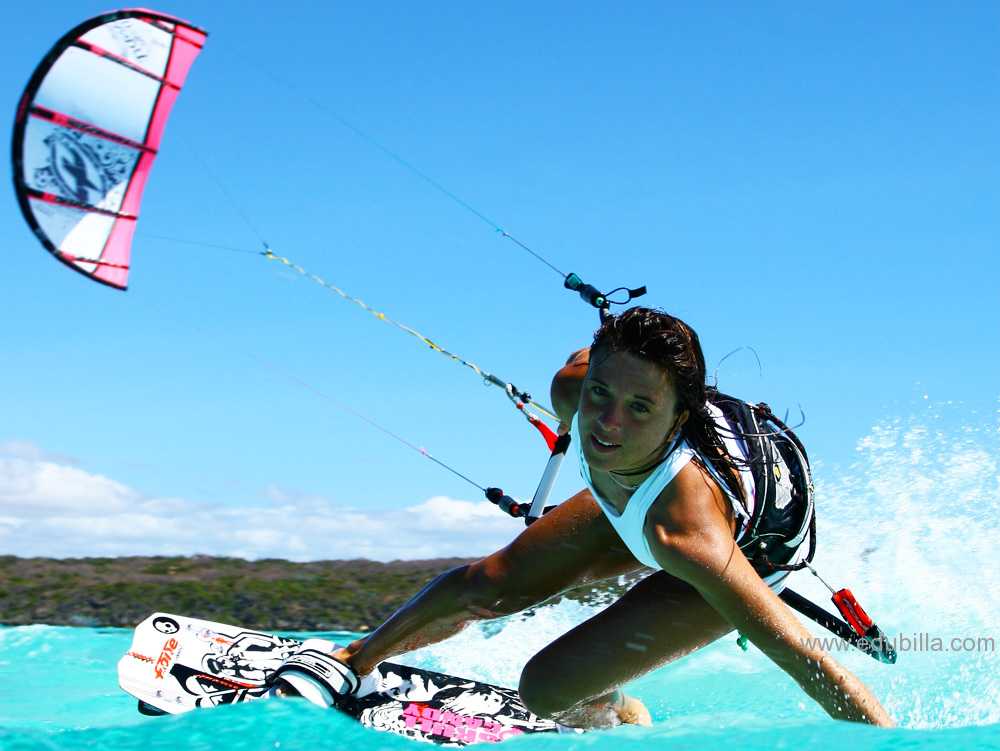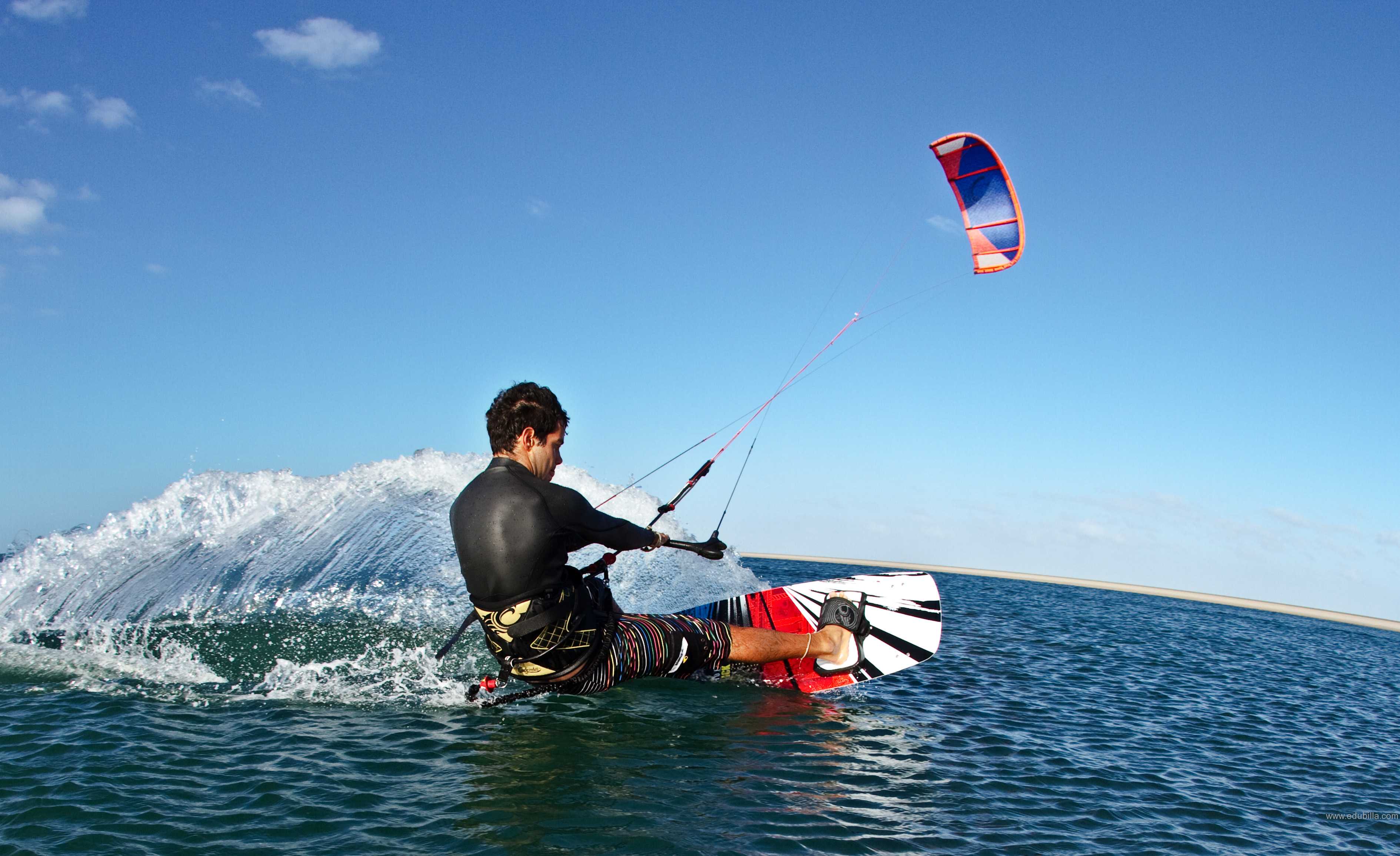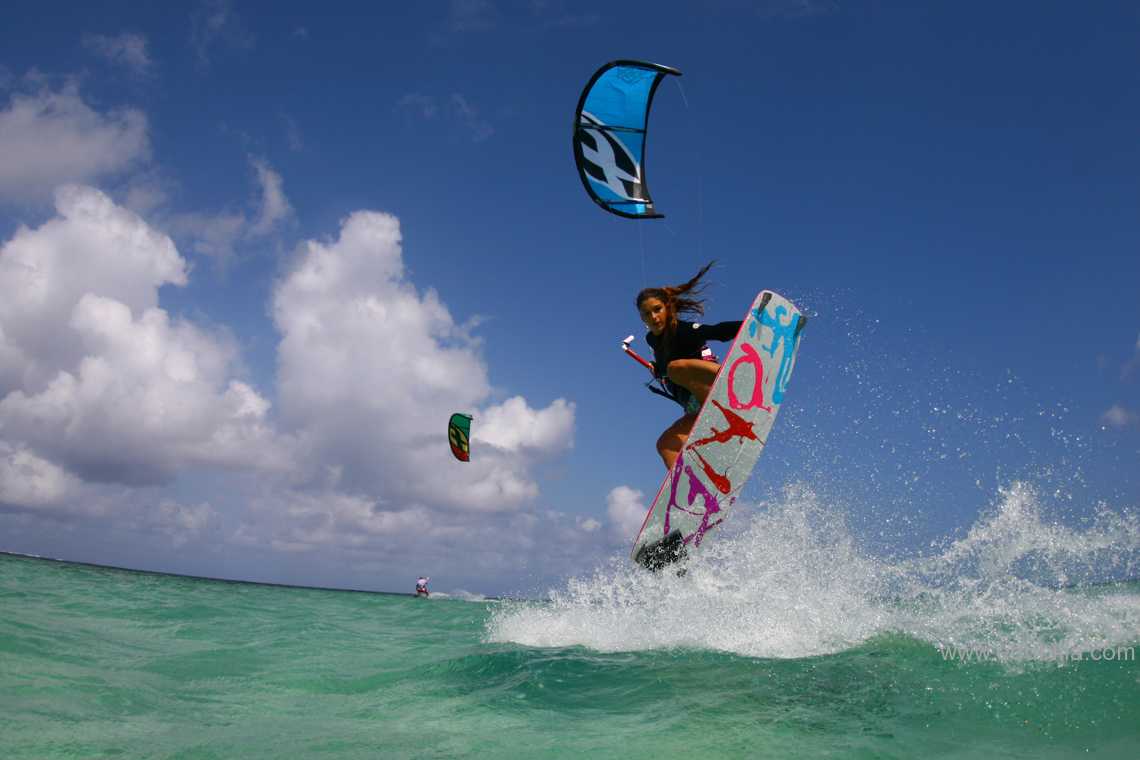
Overview Of Kiteboarding
Kiteboarding is a surface water sport combining aspects of wakeboarding, snowboarding, windsurfing, surfing, paragliding, skateboarding and gymnastics into one extreme sport. A kiteboarder harnesses the power of the wind with a large controllable power kite to be propelled across the water on a kiteboard similar to a wakeboard or a small surfboard, with or without footstraps or bindings.
Kitesurfing is a style of kiteboarding specific to wave riding, which utilizes standard surfboards or boards shaped specifically for the purpose.
There are different styles of kiteboarding, including freestyle, freeride, downwinders, speed, course racing, wakestyle, jumping and kitesurfing in the waves.In 2012, the number of kitesurfers was estimated by the ISAF and IKA at 1.5 million persons worldwide (pending review). The global market for kite gear sales is worth US$250 million.
Styles:
- Freeride
- Freestyle
- Wave-riding
- Wakestyle
- Jumping orAirstyle
- Wakeskate
- Course racing
- Speed racing
Techniques:
- Kitesurfing basics
- Turning
- Controlled flying and jumping
- Board grabs
Game Rules
In 1972, the International Regulations for Preventing Collisions at Sea defined the rules and guidelines for all sailing crafts. The oceans and seas are full of vessels, yachts, fishing boats and cargo ship, so there should be signals and regulation for all.
That is why Colregs (Collision Regulations) were born. Colregs define priorities between sailboats, between sailboats and powerboats, and between power boats. Power boats, as a general rule, must give way to sailboats. Kites and kiteboards are considered sailboats.
Issues like steering, visibility, motor power, size, speed, and maneuverability are taken into consideration every time two crafts approach one another. Since 1972, several amendments have been proposed and approved.
Kiteboarding offers many clear dangers and hidden risks. Knowing them means avoiding them. One of the first things kiteboarders should know is that riders in the water, holding a kite at 12 o'clock, swimming to a lost board, or re-launching a kite from the water, always have the right of way.
Now, let's learn the official right of way in kiteboarding:
1. Motor-powered boats must give way to kiteboarders;
2. The kiteboarder on port tack must give way to the kiteboarder on starboard tack;
3. The upwind kiteboarder must give way to the downwind kiteboarder;
4. When two kiteboarders are sailing on the same side at different speeds, the faster rider must give way to the slowest athlete;
5. A kiteboarder in trouble or with an incoming obstacle has right of way over another rider;
6. Keep away from races and training courses, as well as dedicated bathing areas and harbors;
7. Kiteboarder must keep away from sailing races, sailing instruction, bathing areas and harbors;
7. When two kiteboarders prepare to cross one another, the upwind rider keeps his kite high, and the downwind rider keeps his kite low. The rule applies to both riders, whether they're sailing on the same side or the opposite side;
8. Kiteboarders always lose the right of way if they are changing side, jumping, performing a loop or pulling air tricks. Riders should never jump when upwind of another kiteboarder;
9. In sailing intersections (for example, beach/water), the kiteboarder who is launching must give way to the incoming rider in the water;
10. Kiteboarders are not allowed to jump, loop the kite, and ride waves in the intersections (beach/water).
11. Kiteboarders must carefully launch and land their kite while avoiding to keep the kite flying on the beach longer than necessary.
12. Kiteboarders riding waves have the right of way, independently of the side they're on. If more riders are surfing the same wave, the kiteboarder closer to the breaking part of the wave has the right of way.
Kitesurfing safety rules:
Kite High Rule - A kiter who is upwind (closest to the wind) must keep their kite high to avoid their lines crossing those of downwind kiters. Similarly, the downwind kiter must keep their kite low to avoid their lines crossing upwind kites. This applies regardless of whether kiters are on the same, or opposing courses.
Clearance Rule - A kiter while jumping must have a clear safety zone of at least 50m downwind because they will move downwind during the jump. A rider must also have a clear safety zone of 30m upwind to jump as his lines could touch the kite or the lines of another rider kiteboarding close by (see Kite High rule). It's important to also consider potential hazards downwind and crosswind of the rider such as people, buildings, trees and other fixed obstacles.
Kiters are also considered as sailing vessels – so some standard sailing rules apply such as:
Starboard Rule-When kiters approach from opposite directions the kiter who has the wind on the starboard (right side, right leg/arm leads in direction of travel) has right of way. The kiter who has the wind on the port side (left side, left leg/arm are leads in direction of travel) shall keep out of the way of the other. In simple terms, this means "keep right" with the kiter coming in the opposite direction passing on the left.
In sailing terms, a sailor or kiter with right of way is entitled to "insist" on exercising that right (warning opposing kiters) by shouting "starboard" very clearly and in good time.
Other boating rules such as no-go zones, distance from shore and swimmers also apply
Equipments Need For Kiteboarding
Power kites:
A power kite is available in two major forms: leading edge inflatables and foil kites.
Leading edge inflatables:
Leading edge inflatable kites, known also as inflatables, LEI kites, are typically made from ripstop polyester with an inflatable plastic bladder that spans the front edge of the kite with separate smaller bladders that are perpendicular to the main bladder to form the chord or foil of the kite.
Foil kites:
Foil kites are also mostly fabric (ripstop nylon) with air pockets (air cells) to provide it with lift and a fixed bridle to maintain the kite's arc-shape, similar to a paraglider. Foil kites have the advantage of not needing to have bladders manually inflated, a process which, with an LEI, can take up to ten minutes. Foil kites are designed with either an open or closed cell configuration.
Open Cell:
Open cell foils rely on a constant airflow against the inlet valves to stay inflated, but are generally impossible to relaunch if they hit the water, because they have no means of avoiding deflation, and quickly become soaked.
Closed Cell:
Closed cell foils are almost identical to open cell foils except they are equipped with inlet valves to hold air in the chambers, thus keeping the kite inflated (or, at least, making the deflation extremely slow) even once in the water. Water relaunches with closed cell foil kites are simpler; a steady tug on the power lines typically allows them to take off again. An example for a closed cell kite is the Arc Kite.
Kite sizes:
Kites come in sizes ranging from 0.7 square meters to 21 square meters, or even larger. In general, the larger the surface area, the more power the kite has. Kite power is also directly linked to speed, and smaller kites can be flown faster in stronger winds. The kite size—wind speed curve tapers off, so going to a larger kite to reach lower wind ranges becomes futile at a wind speed of around eight knots. Kites come in a variety of designs. Some kites are more rectangular in shape; others have more tapered ends; each design determines the kite's flying characteristics. 'Aspect ratio' is the ratio of span to length. High aspect ratios (ribbon-like kites) develop more power in lower wind speeds.
Other equipment:
- Flying lines
- control bar
- kite harness
- Kiteboard
- wetsuit
- safety hook knife
- helmet
- personal flotation device
- impact vest
- Signaling devices
- buddy
History Of Kiteboarding
The History of Kiteboarding or Kitesurfing is a story of two French brothers - Dominique and Bruno Legaignoux - with a strong determination and loving passion for water sports.
Kiteboarding History Timeline:
1970-Two brothers, Bruno Legaignoux and Dominique Legaignoux, from the Atlantic coast of France, developed kites for kitesurfing in the late 1970s and early 1980s and patented an inflatable kite design in November 1984, a design that has been used by companies to develop their own products.
1977-In October 1977 Gijsbertus Adrianus Panhuise (Netherlands) received the first patent for KiteSurfing. The patent covers, specifically, a water sport using a floating board of a surf board type where a pilot standing up on it is pulled by a wind catching device of a parachute type tied to his harness on a trapeze type belt. Although this patent did not result in any commercial interest, Gijsbertus Adrianus Panhuise could be considered as the originator of KiteSurfing.
1980-Their story started winning sailing titles at the age of 10, such as the French Junior Championships in 1979. In 1984, inspired by "Jacob's Ladder," a catamaran pulled by flexifoils, Dominique and Bruno thought of a dual line kite propulsor.
1985-The first kite was tested with two water skis in their feet. The first patent was registered in 1985, the year when they present the invention at the Brest International Speed Week. Unfortunately, the Legaignoux brothers were still not lucky. There was no windsurfing company interested in developing a new sport.
1987-In the next couple of years, it's time to better their wings. In 1987, Bruno makes a very successful demonstration during the Funboard World Cup with biggest wing ever produced: 17m2. Between 1988 and 1989, the wings are more stable and lighter. A great improvement has been achieved.
1990-In 1990, practical kite buggying was pioneered by Peter Lynn at Argyle Park in Ashburton, New Zealand. Lynn coupled a three-wheeled buggy with a forerunner of the modern parafoil kite. Kite buggying proved to be very popular worldwide, with over 14,000 buggies sold up to 1999.
1993-By 1993, Dominique and Bruno decide to run their own company and put their invention to commercial test. After several meetings with Neil Pryde - a very well-known windsurf company - the first series of kites begin to hit the market, under the Wipika trademark. We were in 1995/96.
1996-In 1996, Laird Hamilton and Manu Bertin were instrumental in demonstrating and popularising kitesurfing off the Hawaiian coast of Maui while in Florida Raphaël Baruch experimented riding windsurfing boards with various foil kites and changing the name of the sport from flysurfing to kitesurfing.
1997-In 1997, the Legaignoux brothers developed and sold the breakthrough "Wipika" kite design which had a structure of preformed inflatable tubes and a simple bridle system to the wingtips, both of which greatly assisted water re-launch. Bruno Legaignoux has continued to improve kite designs, including developing the bow kite design, which has been licensed to many kite manufacturers.
1998-During 1998, Don Montague and Robby Naish asked for a license, too. In 1999, with a lot of protected patents, Bruno moves to the Dominican Republic in order to develop and research harder in the kite evolution.
1999-"It's why in 1999, I looked for people to take care of Wipika and get myself more time in R&D. I also moved in early 2000 to Dominican Republic which is really a perfect place for R&D. Secondly, the market was not ready for more evolved kites," Bruno Legaignoux once wrote.
2008-In 2008, as referred in SurferToday.com here, Dominique and Bruno Legaignoux announce that they have entered into an ongoing intellectual property licensing agreement with Best Kiteboarding.
2009-On the 14th of November 2009, Alex Caizergues completed another run of 50.98 knots in Namibia.
2010-October 2010, Rob Douglas became the outright record holder for the short distance 500 meters with 55.65 knots.Sébastien Cattelan became the record holder of France and Europe with 55.49 and was the first rider to reach 55 knots.
Origin Of Kiteboarding
Origin:
Their story started winning sailing titles at the age of 10, such as the French Junior Championships in 1979. In 1984, inspired by "Jacob's Ladder," a catamaran pulled by flexifoils, Dominique and Bruno thought of a dual line kite propulsor.
Kiteboarding Invention:
The story of kiteboarding will vary slightly depending on who you speak to. The Chinese for example are credited with using kites as a means of propulsion as far back as the 13th century. In the 1800’s George Pocock used kites to propel carts on land and ships on the water, making use of a 4-line control system similar to what we use today. And in 1903, aviation pioneer Samuel Cody developed “man-lifting kites” and succeeded in crossing the English Channel in a small collapsible canvas boat powered by a kite.
First kite:
The first kites are tested in catamarans, small fishing boats, water skis, windsurf boards, skateboards, inline skates, inflatable boats, kayaks, buggies and many other watercraft devices.
First Competition:
In 1997, specialized kite boards were developed by Raphaël Salles and Laurent Ness. By the end of 1998 kitesurfing had become an extreme sport, distributed and taught through a handful group of shops and schools worldwide. The first competition was held on Maui in September 1998 and won by Flash Austin
Governing Bodies
International Kiteboarding Association:
The International Kiteboarding Association (IKA),is the only kiteboarding class inside the International Sailing Federation (ISAF).The IKA class rules fall in the category of a development class.
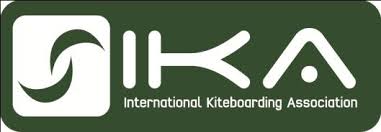
History of IKA:
The International Kiteboarding Association was founded in April 2008, after the International Sailing Association (ISAF) had included the principle of surfers being propelled by a kite in the 'ISAF Equipment Rules of Sailing'.Kiteboarding was adopted in November 2008 as an ISAF international sailing class. An Executive Committee is re-appointed by the class AGM. The duties of the Executive Committee are to take care of the day-to-day business of the association, and to coordinate submissions from the sub-committees.
Disciplines:
There are five disciplines with individual world rankings and world championships.
Freestyle (where performance is judged on individual expression and difficulty of tricks)
Course Racing (comparable to standard sailing regattas)
Kite Cross (riders compete in heats against each other, with the winners advancing to the next round)
Wave Riding (where performance is judged on wave selection and performance of manoeuvres on the wave)
Speed (with performance measured by the average speed over a fixed distance, usually 500 m)
Records:
French kiteboarder Sebastien Cattelan became the first sailor to break the 50 knots barrier by reaching 50.26 knots on 3 October 2008 at the Lüderitz Speed Challenge in Namibia.Earlier in the event, on 19 September, American Rob Douglas reached 49.84 knots (92.30 km/h),becoming the first kitesurfer to establish an outright world record in speed sailing. Previously the record was held only by sailboats or windsurfers.
The outright sailing speed record has since been claimed by the French trimaran Hydroptère which, on 4 September 2009, reached a speed of 51.36 knots over 500 meters and 50.17 over a nautical mile in open ocean and only 25 to 30 knots of wind.
In October 2010, Rob Douglas became the outright speed world record holder on water powered by the wind with 55.65 knots, exceeding the previous record by more than four knots.
Awards Related To Kiteboarding
Sample Documents Of Kiteboarding
-Lance Armstrong

